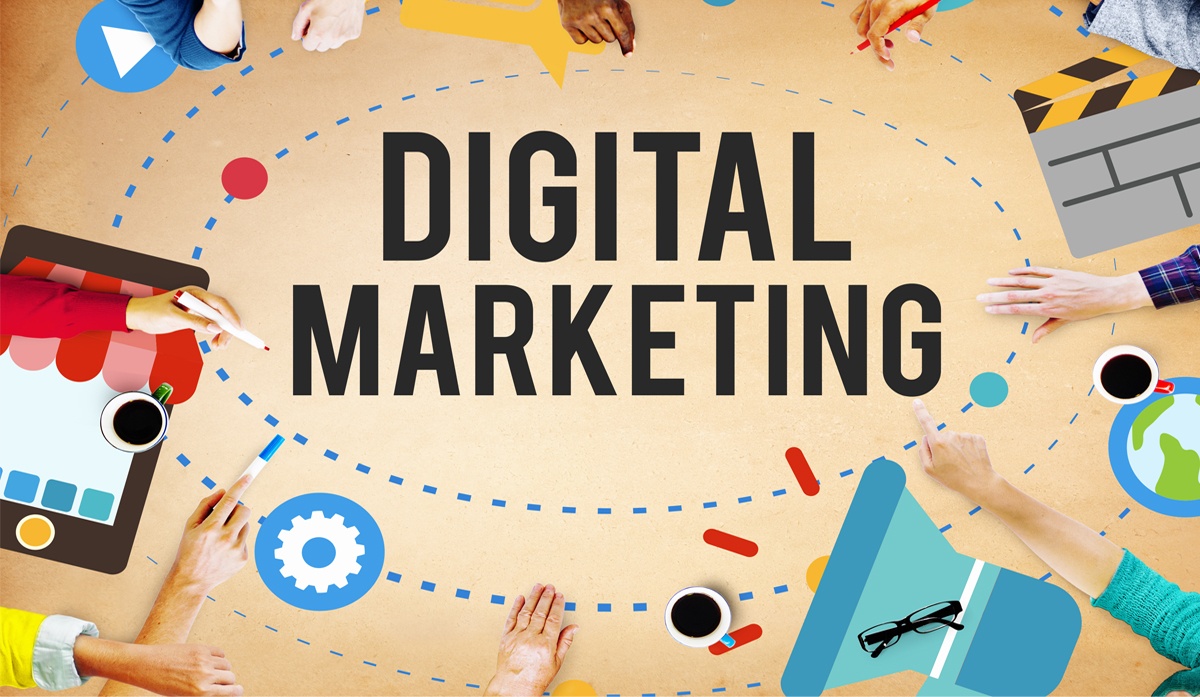In today’s fast-paced digital landscape, mastering the art of marketing has become more complex and dynamic than ever before. Traditional marketing strategies have given way to a more agile and data-driven approach known as digital marketing. Within this realm, the 5 D’s of digital marketing—Digitalization, Data, Devices, Display, and Disruption—serve as pillars guiding marketers toward success in an ever-evolving digital ecosystem.
1. Digitalization:
Digitalization has revolutionized the way businesses operate, communicate, and market their products or services. It refers to the process of leveraging digital technologies to transform business processes, enhance customer experiences, and stay ahead of the competition. In digital marketing, embracing digitalization involves:
- Website Optimization: Building a responsive and user-friendly website optimized for search engines (SEO) and user experience (UX).
- Content Marketing: Creating valuable and relevant content across various digital channels, such as blogs, videos, social media, and podcasts, to engage and educate the target audience.
- E-commerce Integration: Leveraging e-commerce platforms to streamline online transactions and provide seamless shopping experiences for customers.
- Mobile Marketing: Developing mobile-responsive content and strategies to target users on smartphones and tablets, considering the increasing mobile usage worldwide.
2. Data:
Data lies at the heart of digital marketing, empowering marketers with valuable insights into consumer behavior, preferences, and trends. Harnessing data effectively enables marketers to personalize their campaigns, optimize performance, and drive meaningful outcomes. Key aspects of leveraging data in digital marketing include:
- Data Analytics: Utilizing advanced analytics tools to track and analyze various metrics, such as website traffic, click-through rates, conversion rates, and customer demographics, to measure the effectiveness of marketing campaigns.
- Customer Segmentation: Segmenting the target audience based on demographic, psychographic, and behavioral data to tailor marketing messages and offers to specific customer segments.
- Personalization: Delivering personalized experiences across digital channels by leveraging data to understand individual preferences and interests, thereby increasing engagement and conversions.
- Predictive Analytics: Using predictive modeling and machine learning algorithms to forecast future trends and behaviors, enabling proactive decision-making and campaign optimization.
3. Devices:
The proliferation of devices, including smartphones, tablets, laptops, and wearable technology, has transformed the way consumers interact with brands and consume content. Marketers must adapt their strategies to cater to the diverse preferences and behaviors associated with different devices. Key considerations for device-centric digital marketing include:
- Responsive Design: Designing marketing assets, such as websites, emails, and ads, to adapt seamlessly to various screen sizes and resolutions, ensuring a consistent and optimized experience across devices.
- Mobile-First Approach: Prioritizing mobile optimization in marketing strategies due to the widespread use of smartphones and the increasing trend of mobile browsing and shopping.
- App Marketing: Leveraging mobile applications to engage users, enhance brand loyalty, and drive conversions through features such as push notifications, in-app messaging, and personalized recommendations.
- Cross-Device Tracking: Implementing cross-device tracking technologies to understand the customer journey across multiple devices and channels, enabling cohesive and targeted marketing campaigns.
4. Display:
Display advertising remains a fundamental component of digital marketing, encompassing various formats such as banners, videos, native ads, and social media ads. Effective display advertising involves capturing audience attention, conveying compelling messages, and driving desired actions. Key elements of display advertising include:
- Visual Appeal: Creating visually appealing and attention-grabbing ad creatives that resonate with the target audience and communicate the brand’s value proposition effectively.
- Targeting and Retargeting: Leveraging demographic, behavioral, and contextual targeting to deliver ads to relevant audiences and retargeting strategies to re-engage users who have previously interacted with the brand.
- Ad Placement: Identifying high-traffic websites, social media platforms, and digital channels frequented by the target audience and strategically placing ads to maximize visibility and engagement.
- Performance Measurement: Monitoring key performance indicators (KPIs) such as impressions, clicks, conversions, and return on investment (ROI) to evaluate the effectiveness of display advertising campaigns and optimize accordingly.
5. Disruption:
In today’s dynamic digital landscape, disruptive innovation is reshaping industries and challenging traditional marketing paradigms. Embracing disruption involves adopting innovative strategies, technologies, and business models to stay ahead of the curve and seize new opportunities. Key aspects of disruptive digital marketing include:
- Emerging Technologies: Experimenting with emerging technologies such as artificial intelligence (AI), virtual reality (VR), augmented reality (AR), blockchain, and voice assistants to create immersive and interactive brand experiences.
- Agile Marketing: Adopting agile methodologies and iterative approaches to marketing campaigns, allowing for rapid experimentation, adaptation, and optimization based on real-time feedback and data insights.
- User-Generated Content: Encouraging user-generated content (UGC) through social media campaigns, contests, and community engagement initiatives to foster authentic brand advocacy and word-of-mouth marketing.
- Collaborative Partnerships: Forming strategic partnerships with complementary brands, influencers, and platforms to extend reach, enhance credibility, and tap into new audience segments.
In conclusion, mastering the 5 D’s of digital marketing—Digitalization, Data, Devices, Display, and Disruption—is essential for marketers to thrive in today’s competitive landscape. By embracing digital transformation, harnessing the power of data, optimizing for diverse devices, leveraging effective display advertising techniques, and embracing disruption through innovation and collaboration, marketers can drive meaningful engagement, foster brand loyalty, and achieve sustainable growth in the digital age.
